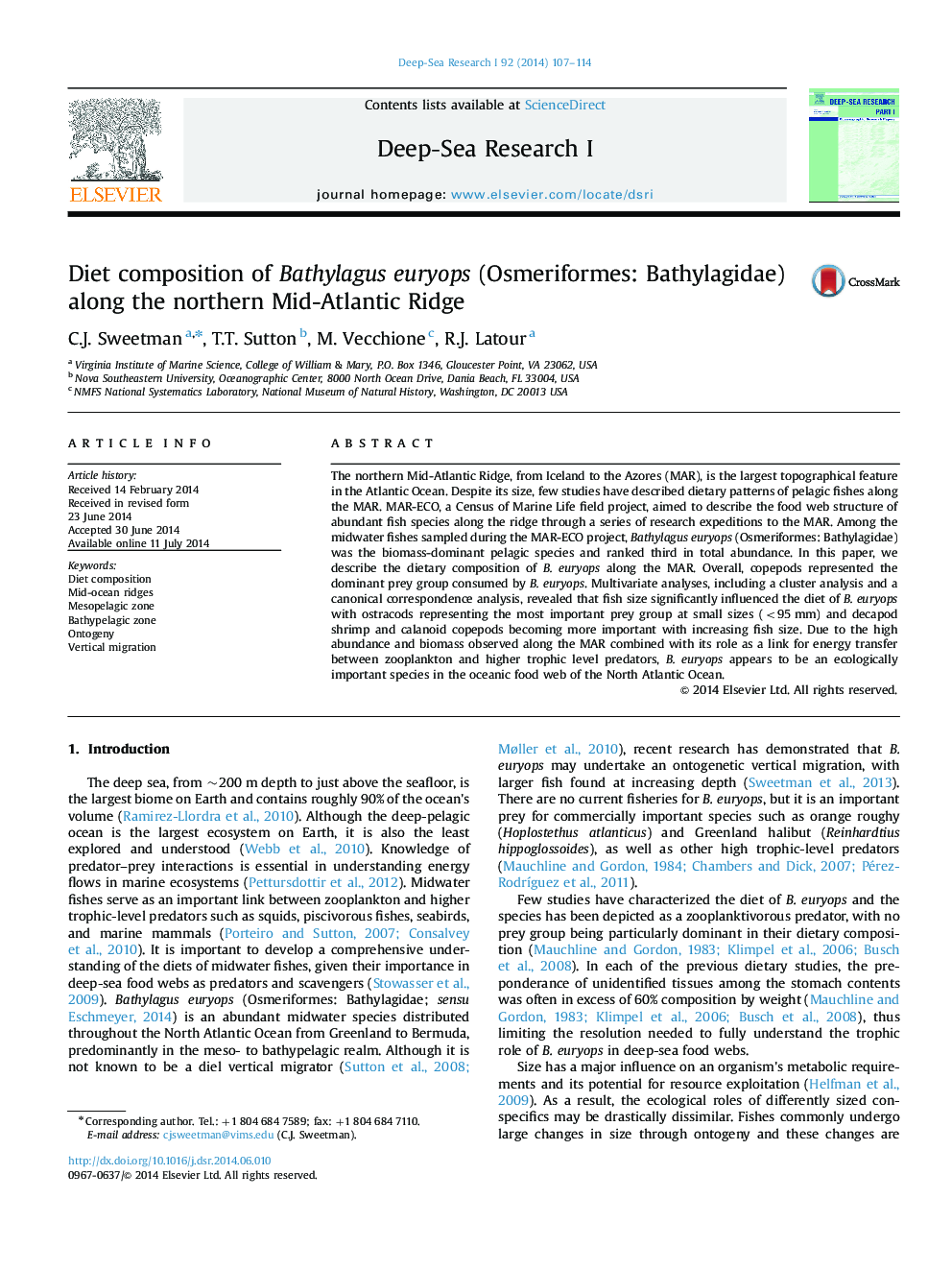| Article ID | Journal | Published Year | Pages | File Type |
|---|---|---|---|---|
| 6383609 | Deep Sea Research Part I: Oceanographic Research Papers | 2014 | 8 Pages |
â¢B. euryops ranked first in biomass and third in abundance along the Mid-Atlantic Ridge.â¢We modeled large-scale dietary patterns relative to physical/biological data.â¢Multivariate analyses revealed a significant influence of fish size on the diet of B. euryops.â¢Crustaceans, primarily copepods, represented the dominant component of the dietary composition.
The northern Mid-Atlantic Ridge, from Iceland to the Azores (MAR), is the largest topographical feature in the Atlantic Ocean. Despite its size, few studies have described dietary patterns of pelagic fishes along the MAR. MAR-ECO, a Census of Marine Life field project, aimed to describe the food web structure of abundant fish species along the ridge through a series of research expeditions to the MAR. Among the midwater fishes sampled during the MAR-ECO project, Bathylagus euryops (Osmeriformes: Bathylagidae) was the biomass-dominant pelagic species and ranked third in total abundance. In this paper, we describe the dietary composition of B. euryops along the MAR. Overall, copepods represented the dominant prey group consumed by B. euryops. Multivariate analyses, including a cluster analysis and a canonical correspondence analysis, revealed that fish size significantly influenced the diet of B. euryops with ostracods representing the most important prey group at small sizes (<95Â mm) and decapod shrimp and calanoid copepods becoming more important with increasing fish size. Due to the high abundance and biomass observed along the MAR combined with its role as a link for energy transfer between zooplankton and higher trophic level predators, B. euryops appears to be an ecologically important species in the oceanic food web of the North Atlantic Ocean.
